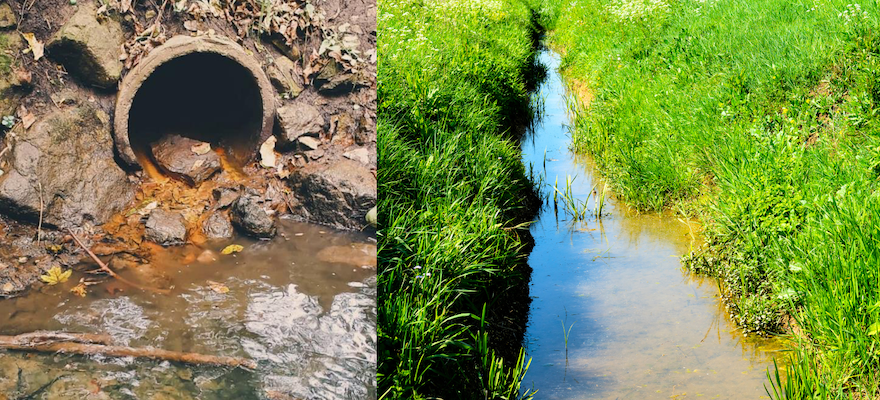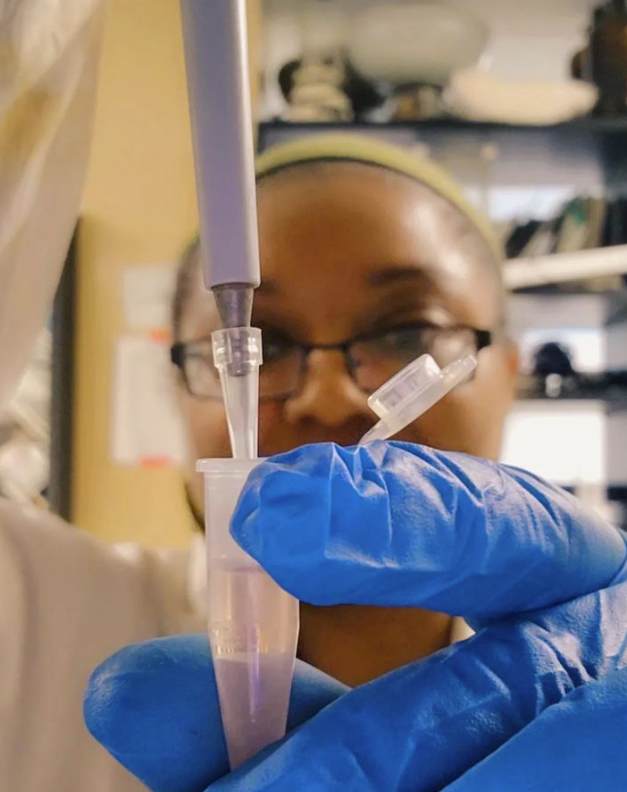Mapping microplastics in Great Lake tributaries
Ecology student Brittanie Dabney investigates how microplastics enter Great Lake tributaries by way of urban stormwater infrastructure.

Microplastic (MP) pollution has been a national concern since the 1970s but little research has been done on how drainage infrastructure ferries MPs through tributaries to the Great Lakes.
Since 2019, Brittanie Dabney has collected and processed over 300 samples from the Clinton and Rouge River watersheds in Michigan in search of answers. The Clinton River watershed has more agricultural and forested areas and the Rouge River watershed more residential and commercial developments, providing two contrasting environments to study.
A T-RUST and ecology Ph.D. student in the Wayne State University College of Liberal Arts and Sciences, Dabney presented her field research examining the influence of green and gray stormwater outfall infrastructure on MP concentrations at the recent 2023 Graduate Research Symposium.
“Currently, when there's heavy rainfall, much of the stormwater, which contains a variety of chemical and physical pollutants, will enter the river directly through outfalls located along the river,” Dabney said. “Gray infrastructure, such as underground pipes, are impervious and ferry MPs directly to the river. But green stormwater outfalls, such as surface drains, allow time for the contaminants to seep into the soil before entering the river.”
Microplastics accumulation and morphology

Dabney acknowledged it’s difficult to determine how superior green infrastructure is to impervious outfalls but reported an average of 14% reduction in the downstream accumulation of microplastics at surface drains across all sites.
“Some sites exhibit a greater reduction in microplastic than others, but these differences are often influenced by the surrounding human activities and landscape characteristics,” she said. “That's why when ecosystem managers try to apply scientific research in their practice, it's necessary that they do initial sampling to understand current site conditions and baselines.”
Dabney mapped hotspots of pollution and investigated MP morphology–sphere, fragment, fiber, or film. Fragments had the highest concentration in both water and sediment, followed by fibers, meaning they were less likely to be captured by surface drains. Unfortunately, those MPs that seep through surface drains before they make it to the river have to go somewhere, and according to Dabney, that’s in the soil.

“Overall, this study gives insight into where the issues of microplastic accumulation are in the watershed and the factors that contribute to plastic concentrations in rivers.”
Plastic is forever, but finding the best means of preventing its voyage to the Great Lakes and surrounding tributaries will significantly impact the maintenance of the region’s ecosystem.
“I hope this research will be used as a guide for ecosystem managers and urban planners when looking to redesign watersheds and install stormwater outfalls,” Dabney said. “And because there are still relatively few large-scale monitoring surveys of microplastics in wadeable tributaries, I hope my research can be used to help inform other monitoring programs and even improve upon what I did.”
Dabney hopes to have her research published later this year.
By Kristy Case